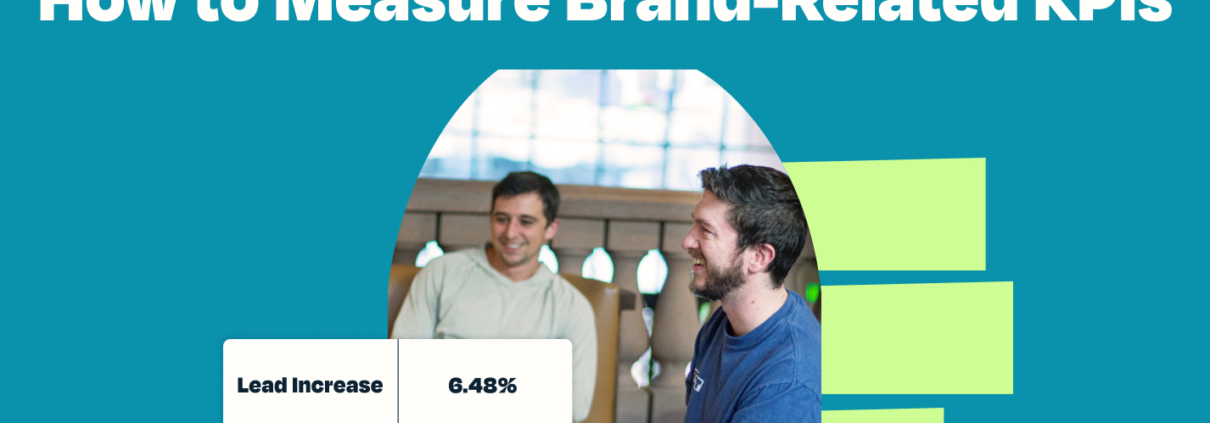How To Measure Brand-Related KPIs
Changes in the macroeconomic environment have left many businesses and marketers scrambling to adjust budgets toward the channels and campaigns that seem to be driving the best results. When we say ‘driving the best results’, we typically mean the channels and campaigns that have been attributed to driving the most revenue, the lowest cost per lead, or whatever the core KPI is in our attribution software.
Typically, we will see performance-focused channels like paid search or even retargeting campaigns driving the key conversions in our attribution software and are therefore inclined to push a greater percentage of our total budget toward these channels and campaigns. This makes sense, right? These campaigns are delivering the ‘best results’ currently, so surely if we push more money to those campaigns and cut budget from the campaigns that aren’t being attributed to our key conversions, we will have better performance, right?
However, this approach will be shortsighted and as a growth marketing agency we’ve been partnering closely with our clients to help identify the right mix of brand and performance spend for each brand we work with today.
It’s very difficult to measure the true success of your top of the funnel campaigns and brand spend, especially when many popular attribution softwares like Google Analytics are designed to give full credit to the channels and campaigns that were at the bottom of the customer journey i.e. last click or last non-direct click.
If we take a few steps back, we need to ask ourselves – how successful would our performance campaigns be if we continued to lower brand campaign initiatives or put less emphasis on the top of the funnel? Would our brand search campaigns still have the same volume and efficiency that they are currently producing? Would our retargeting campaigns be as effective if they’re targeting a smaller audience?
It is not a trick question. The results may not suddenly change overnight or over one week or even over one month, but in the long run, that lack of awareness and trust that was historically developed from brand campaigns will start to affect your performance campaigns and limit your ability to gain new customers.
That’s why it’s always important to ensure that you are constantly running and optimizing top of the funnel campaigns which should be building trust and recall of your brand amongst your target audience, alongside your performance campaigns. And in order to do so successfully, it’s important to measure the success of these campaigns using KPIs that are many times different from the KPIs used to measure the success of your performance campaigns. Although this measurement is not easy, we have some tips to help!
Why Measuring Brand Campaigns Is Hard
As mentioned above, it’s harder to both measure and communicate the intangible value driven from brand campaigns, and this is why many brands and marketers will look to reallocate or even eliminate spend provided to these campaigns in order to make their CPA metrics look better.
For an easy example, consider that you’re an ecommerce brand and you see your branded search campaign on Google Ads driving a 10x ROAS while your YouTube Efficient Reach optimized campaign is driving a 1x ROAS. You’ll surely be tempted to reallocate or completely eliminate the YouTube budget and push the extra spend into branded search. After all, the ROAS numbers don’t lie.
But, what this strategy is missing is the long term effect of reaching thousands of new users with CPVs under $0.03, day in and day out, that only a brand awareness optimized YouTube campaign can provide.
If you are to remove the campaign driving awareness of your brand in the first place, will you still have the same amount of users searching for your brand later? Most likely not. As your brand campaign begins to be less efficient and provide less conversion volume over time, you will start wondering what’s happening.
Similarly, we will typically see social media channels such as Facebook, Instagram, and TikTok, drive higher CPAs of our lower funnel metrics than paid search. Why? Because those social media channels are disrupting a user during their scrolling while paid search is presenting a solution at the exact moment the user is searching for one. In short, the intent is vastly different and the effect that each of these channels have on the full funnel is different as well and should be treated as such.
So then, how should we consider measuring the effectiveness of brand campaigns?
How You Can Measure Brand Campaign Effectiveness
Measuring the effectiveness of brand campaigns isn’t as straightforward as clocking your last non-direct click interactions in Google Analytics. You need to be smart and selective about what metrics you can attribute to a brand campaign.
To begin, it’s important to set clear expectations and get alignment with all key stakeholders involved in the campaign of what the expectations will be. When you are running brand campaigns that are typically introducing or reinforcing your brand messaging to people, you should not expect to drive lower CPAs than a higher intent campaign type like paid search.
Instead, you need to be realistic about what you can expect and align on those KPIs instead in order to truthfully measure the effectiveness of your brand initiatives.
Some KPIs to consider when measuring brand awareness campaigns include:
Interactions (views, impressions, engagements)
Available in all ad platforms, you can begin to measure your brand campaigns’ effectiveness by first looking at your views and related view metrics like cost per view, your impressions and related impression metrics like cost per impression, and your overall engagements and cost per engagement. Here, you can also take into consideration view-thru conversions, which are mutually exclusive from click conversions and measure the number of conversions which occurred after a user saw the ad then later converted through a medium other than the original ad they saw.
Additional helpful in-platform metrics to consider measuring include reach and frequency. How many users is your ad or campaign actually reaching and how many times is each user being served the ad.
These metrics can help begin the analysis of your brand campaign performance.
Overall revenue/leads increase
In addition to tracking view, engagement, and frequency metrics within your ad platforms, the effect brand campaigns are having can also be measured by monitoring your overall revenue or leads (or other core KPI metric) lift.
In order for this to be as clean a measurement as possible, it’s important to measure the results that you are typically receiving before you launch a new brand campaign vs the period the brand campaign was running and shortly after it ended. If possible, try not to launch any additional marketing efforts during this timeframe in order to minimize the number of variables contributing to a potential lift.
To help make these types of measurements easier, ad platforms like Google Ads have begun to release additional measurement options within accounts. One such helpful measurement option within Google Ads is Conversion Lift. Conversion Lift helps you measure the number of conversions, site visits, and other actions directly driven by your audience viewing your ad. You’ll also be able to view data such as Incremental Conversions, Relative Conversion Lift, and a Incremental Conversion Value, which helps make understanding the
While not available in all Google Ads accounts, Conversion Lift measurement can be added by contacting the account’s assigned Google Rep.
Branded search lift
Similar to measuring your overall revenue/leads/conversion lift, another helpful way of determining if your brand campaigns are driving results is by measuring your branded search keywords on both paid and organic search for any signs of potential lift.
Again, here you will want to make sure that you have as limited number of variables as possible, but if your brand campaign is running and reaching thousands of new users, you should be able to notice an impact on your branded search terms in the form of an increase in search volume and clicks.
If your budget isn’t large enough to cover an entire country, especially one as large and diverse as the US, a helpful tip can be to limit your brand campaign to a smaller geographic area and then measure the lift on branded search terms in that geographic area only. This can also help cut down on other variables interfering with the results.
For example, consider launching a brand campaign in one metro area such as Nashville, Tennessee, while keeping all other advertising initiatives in this area the same. Now, measure the brand search numbers on both paid and organic before the campaign is launched, while the campaign is running, and after the campaign has ended for any noticeable lift in brand search volume and clicks during and after the campaign run time.
Direct/Net-New traffic lift
Finally, similar to the brand search lift, you can also look to measure if you have received any additional direct traffic during and after the brand campaign run time. The measurement methodology is the same as above, but will be looking at direct traffic numbers instead.
Bottom Line: Brand Awareness Matters
When building a new campaign strategy or optimizing an already existing campaign strategy, it can be easy to put the most emphasis and therefore budget on the channels and campaigns which drive the lowest cost CPAs. Majority of the time, these will be your performance marketing initiatives like paid search.
However, ignoring the brand campaigns which create trust and awareness, while also assisting in driving your overall conversions, is a common mistake. Instead of jeopardizing your long term success for short term wins, consider a healthy mix of brand and performance campaigns to provide the best results for long term growth.

Chris is a PPC Strategist based in Nashville, Tennessee. When he’s not scaling Google Ads & YouTube campaigns, he enjoys longboarding, tinkering with automation tools, and a little bit of gaming.






